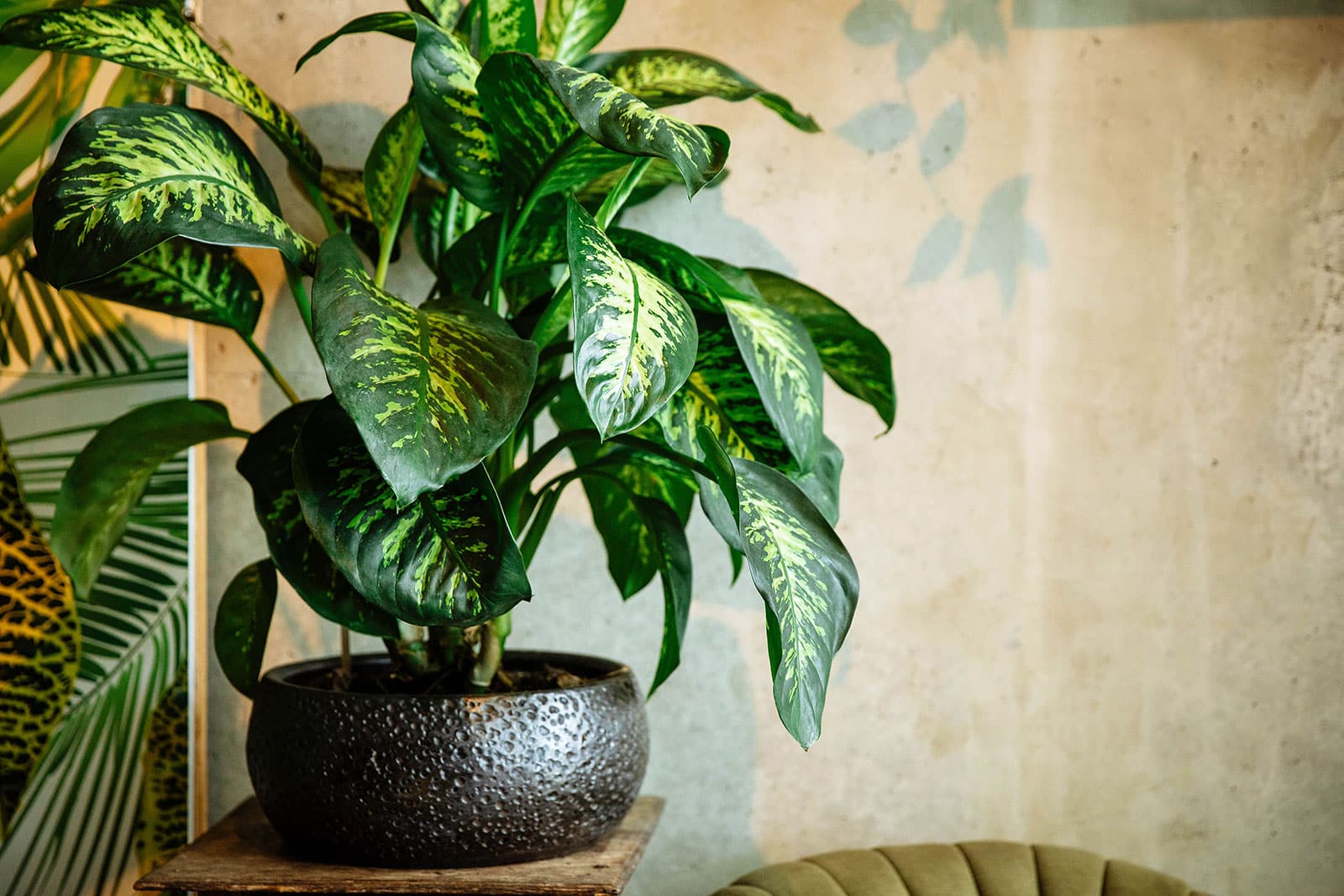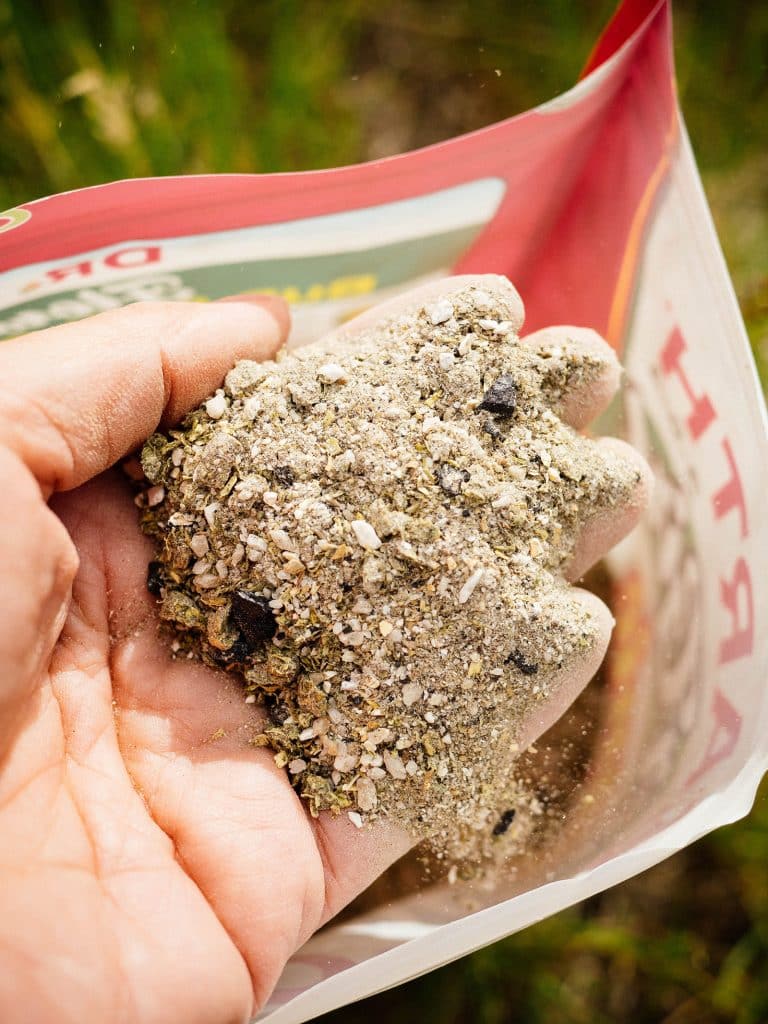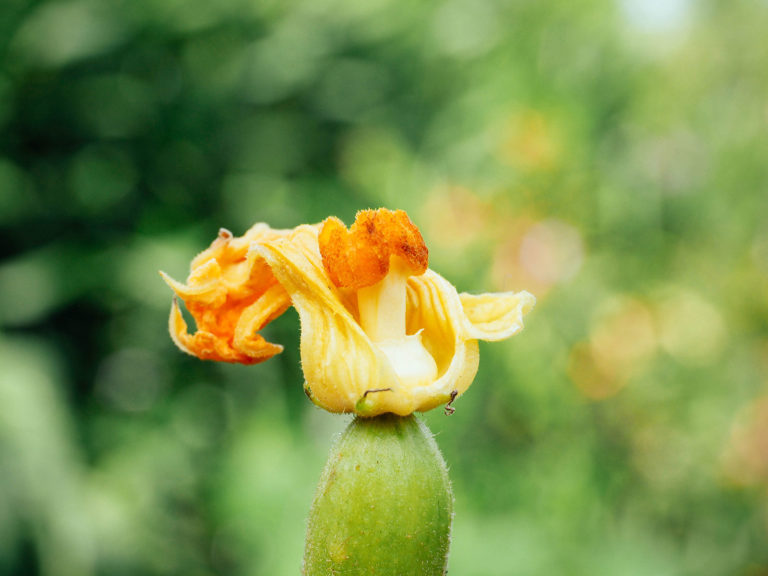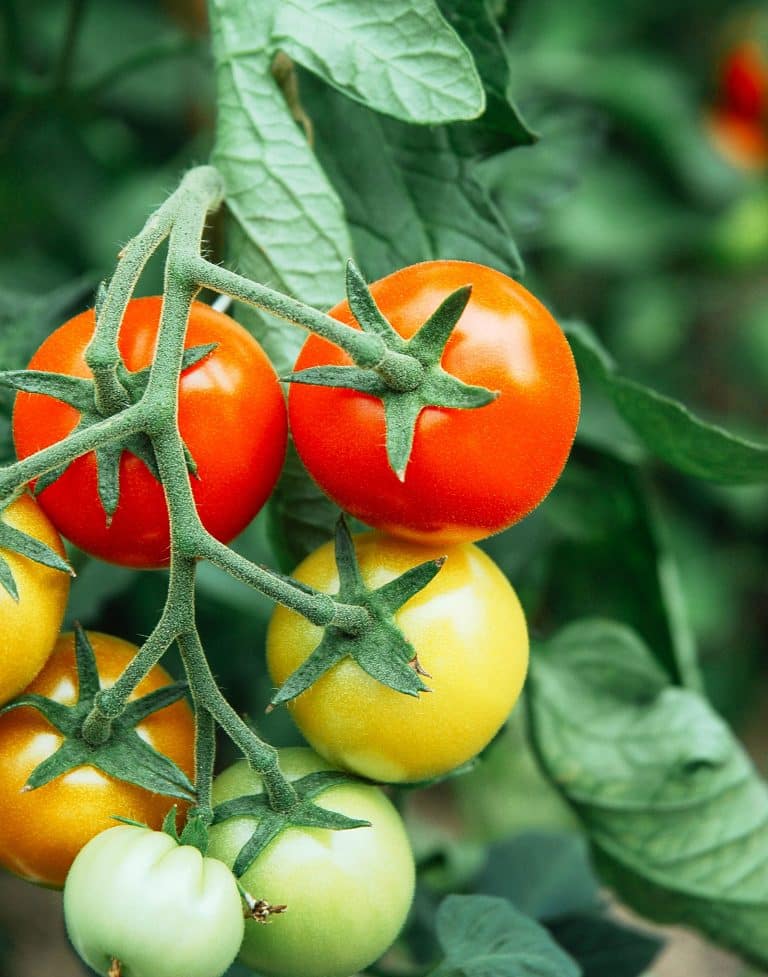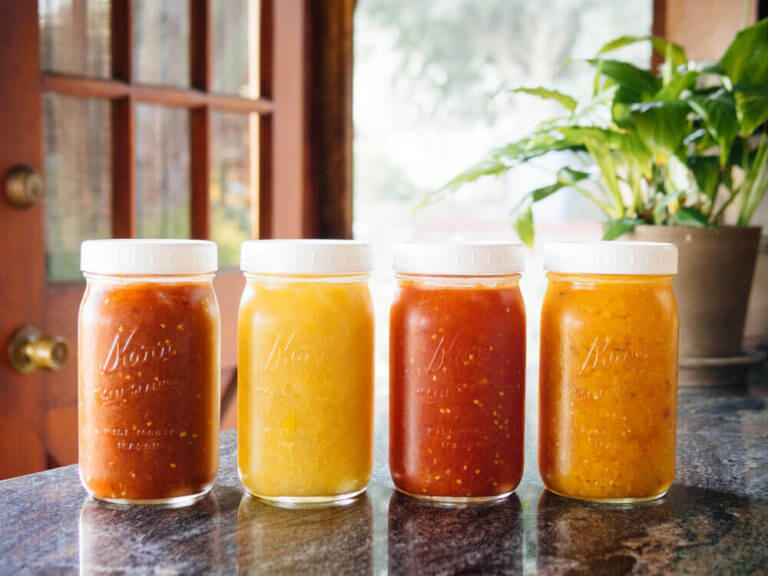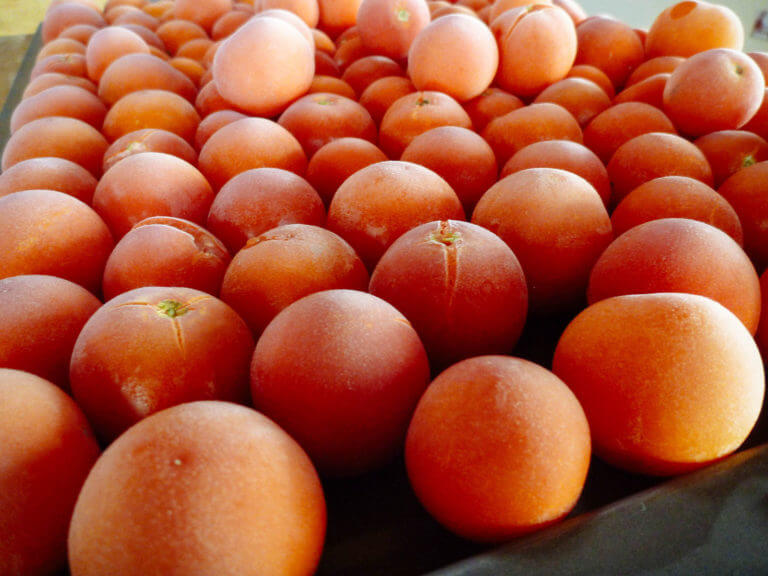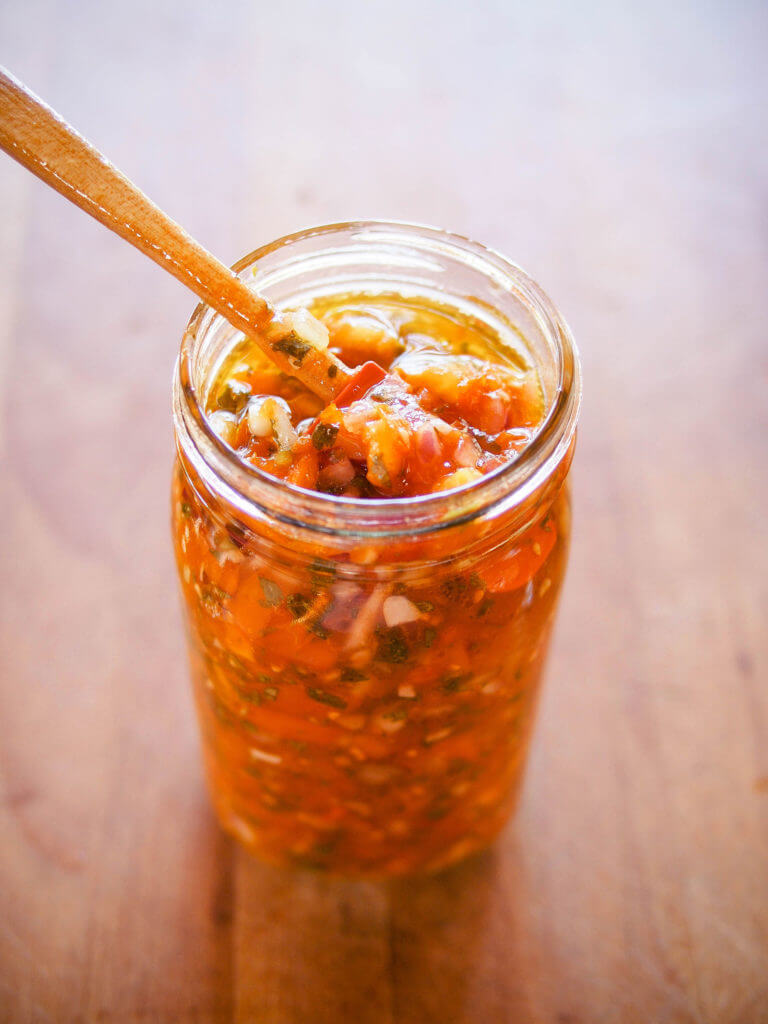Looking for a houseplant that’s both decorative and unfussy? The genus Dieffenbachia might be just what you’re looking for!
This classic plant has adorned living rooms for decades, and we’re all familiar with it to some degree—but did you know there are actually many different species and types of Dieffenbachia?
Below, let’s have a look at the most common wild Dieffenbachia species and a few of the endless cultivars that nurseries and hobbyists have produced over the years. Find some inspiration and pick your favorite!
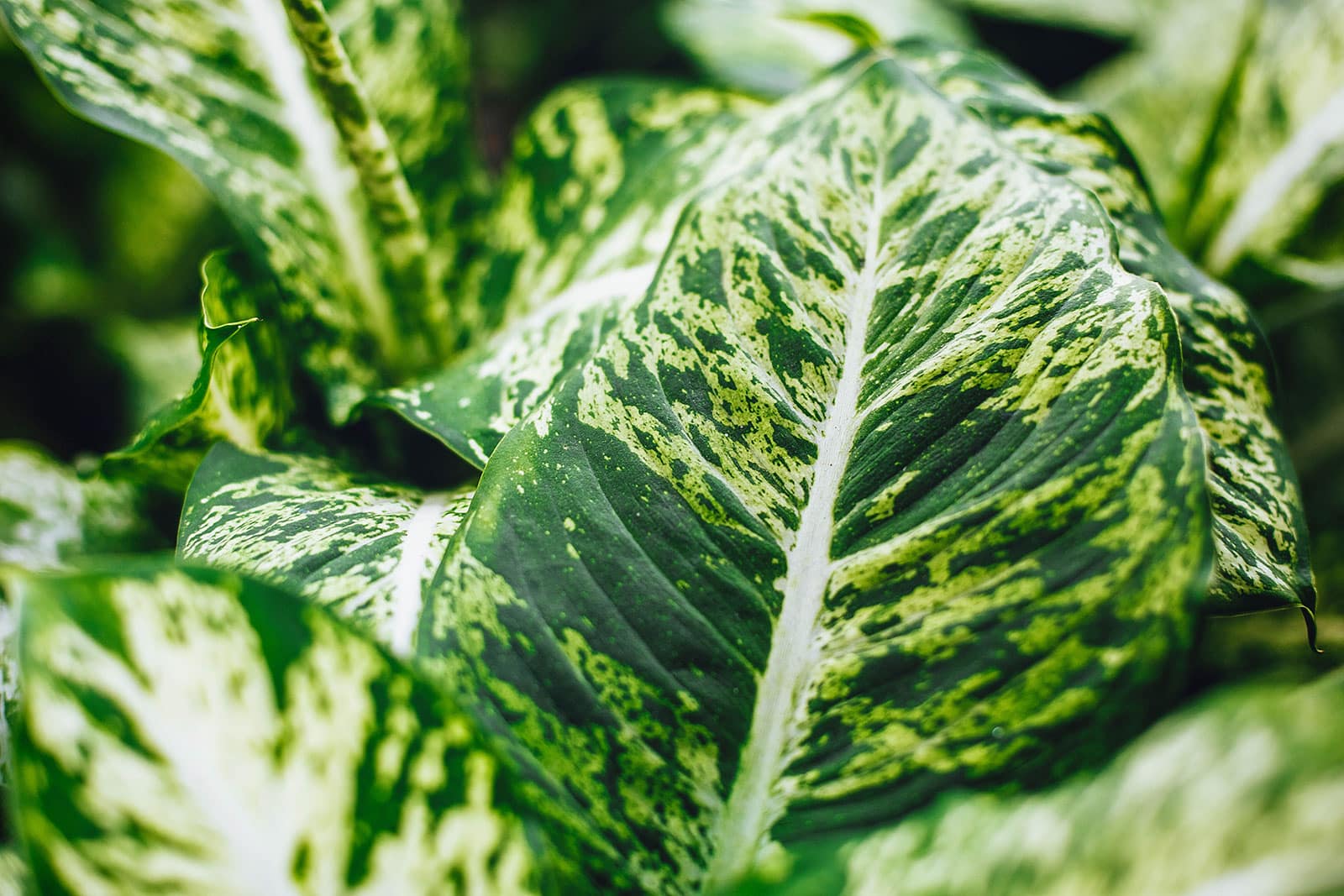
Dieffenbachia species
The genus Dieffenbachia is naturally found in the forests of Central and South America, although there are probably more of these plants in living rooms around the world than in their natural habitat.
Thanks to their decorative foliage and easy care, they’ve been among the most popular houseplants globally for pretty much as long as folks have been growing greenery in their homes!
There are more than 50 different species of Dieffenbachia within the genus, but you’re unlikely to find many of these in their natural state at your local plant shop or garden center. They are, however, used extensively by nurseries for hybridization purposes in attempts to combine the best of two plants into a whole new commercially viable cultivar.
This being said, there are two Dieffenbachia species you can find for sale quite easily. These are also the original parent plants for many of the cultivars we’ll discuss after.
Dieffenbachia seguine (synonym: Dieffenbachia maculata, D. picta)
Like many other plant genera, Dieffenbachia is plagued with taxonomic confusion. Naming isn’t always consistent, and D. seguine is a good example of this.
Throughout the years, this Dieffenbachia has had a bunch of different scientific names. Although ‘seguine’ is now the accepted species name, it’s still sometimes referred to as D. maculata or D. picta.
Dieffenbachia seguine can be found in the wild from Mexico all the way down to Brazil. Even without any selective cultivation, this is a very attractive plant. It features cream variegation on sturdy, dark green leaves.
Dieffenbachia amoena
Another taxonomic problem case, the Latin name Dieffenbachia amoena is widely used but is actually not considered an accepted denomination. It’s a nomen dubium, or a doubted name. But since no one appears to have proposed any alternative yet, I’ll just stick with ‘amoena’!
D. amoena is the forefather of most of the XL types of Dieffenbachia. In the wild, it can reach up to 6 1/2 feet in height. Even in our homes it tends to grow very tall over time, with broad leaves and a thick stem. As with D. seguine, the foliage is beautifully variegated and very decorative.
Where to buy Dieffenbachia plants:
Dieffenbachia cultivars and hybrids
Dieffenbachia ‘Reflector’

One of the current superstars in the world of Dieffenbachia cultivars is called ‘Reflector’. I’m not surprised by its popularity, because this is a really unique plant.
It sports a beautiful camouflage pattern in different shades of green, ranging from lime to almost yellow and deep emerald. Definitely a wishlist-worthy plant.
I particularly like Dieffenbachia ‘Reflector’ as a cheaper alternative to the coveted but pricey Aglaonema pictum ‘Tricolor’, which I discussed in the post on types of Aglaonema houseplants and which it resembles quite a bit.
As we’ll see for many of the Dieffenbachias on this list, houseplant cultivars produced by nurseries are often patented. This is not the case for Dieffenbachia ‘Reflector’; not much is known about its origins. Although it’s recently gained huge popularity, it actually appears to have been around for a while.
Dieffenbachia ‘Memoria Corsii’
‘Memoria Corsii’ is one of the older Dieffenbachia cultivars, probably dating back to the ‘70s. This spectacular plant can be recognized by its lavish leaf pattern, with a dark green rim, lighter leaf nerves and speckles in green and silver.
It’s not a type of Dieffenbachia you’ll see around much anymore, but I’d say it’s more than worth the effort of tracking down!
According to a 1976 study, Dieffenbachia ‘Corsii’ (as the researchers referred to it) is the result of a cross between D. seguine (called D. maculata in the paper) and D. wallisii or D. weirii.
Dieffenbachia ‘Camille’
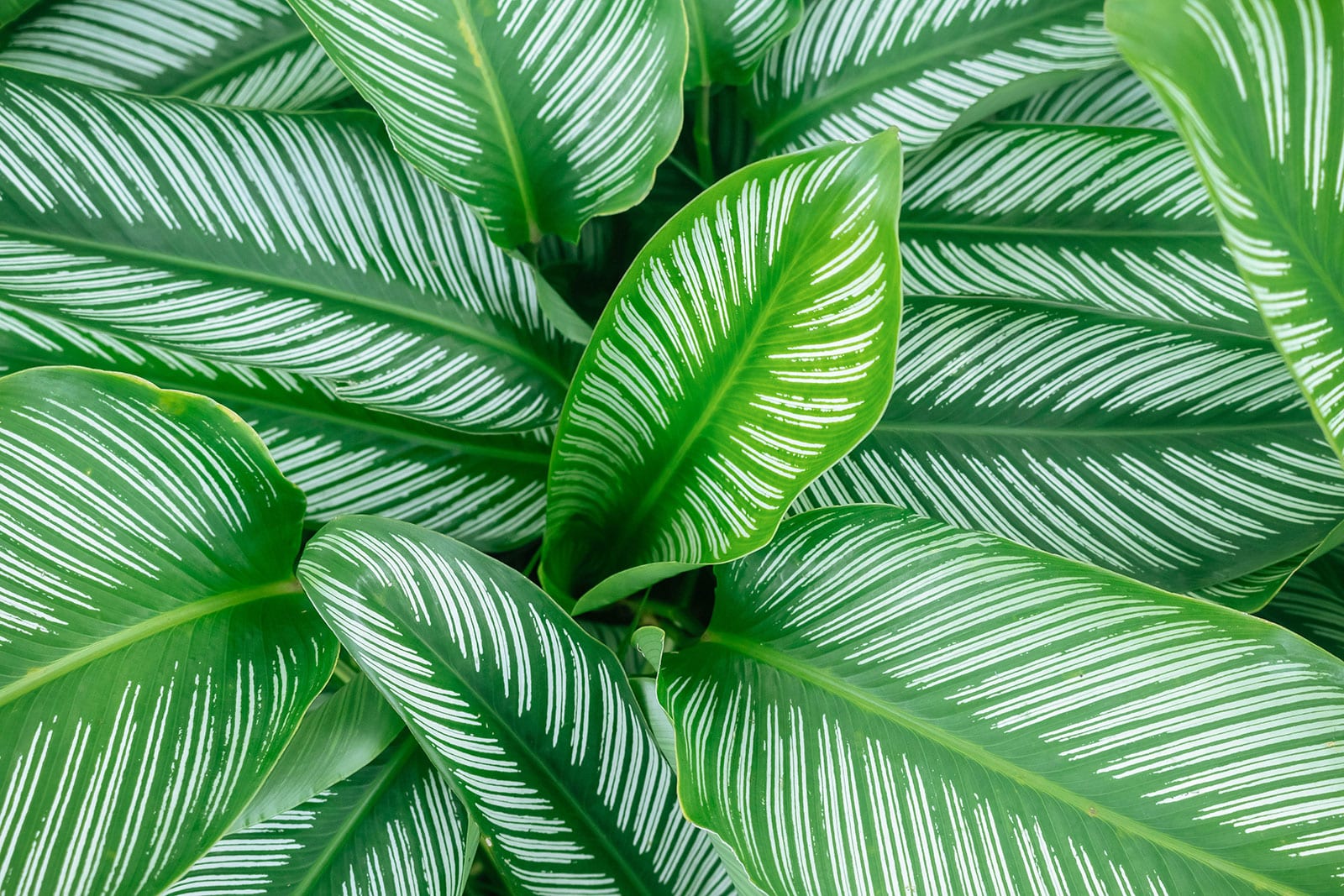
‘Camille’ is one of the classic types of Dieffenbachia, a cultivar that’s always been popular and is still very common today.
The result of a mutation in yet another variety, the unpatented Dieffenbachia ‘Perfection’, ‘Camille’ is easily told apart from its parent plant by its leaf pattern. Rather than speckled foliage, it sports solid cream coloration on the inside of the leaves.
Dieffenbachia ‘Camille’ itself has formed the basis for a bunch of other Dieffenbachias over the years, including such cultivars as ‘Carina’, ‘Rebecca’ and ‘Sarah’.
Dieffenbachia ‘Tiki’
Another Dieffenbachia with a nice camouflage pattern is a cultivar called ‘Tiki’. This one has relatively elongated leaves. The foliage has dark edges, light green leaf veins and a mottled pattern of dark and lighter, silvery speckles in the middle.
Dieffenbachia ‘Tiki’ is a patented cultivar resulting from a mutation in the aforementioned Dieffenbachia ‘Memoria Corsii’, which it does resemble. The difference is mostly in the leaf shape, which is narrower, and the increased amount of silvery coloration.
The registration for this plant took place in 1989, which means the patent expired in 2009.
Dieffenbachia ‘Mars’
There isn’t much information out there about where Dieffenbachia ‘Mars’ came from exactly, nor when this cultivar was first produced, but she’s a beauty!
I just love speckled Dieffenbachias, and its pattern is exactly what makes ‘Mars’ (which is not dissimilar to ‘Reflector’ in terms of looks) so spectacular.
Like many of the older cultivars, Dieffenbachia ‘Mars’ is the parent plant for a bunch of other types of Dieffenbachias. One example is the pretty speckled ‘Paco’, which was patented in 1995 but never became very popular in the houseplant hobby. Shame!
Dieffenbachia ‘Green Magic’
Another cultivar whose origins are different to pin down is Dieffenbachia ‘Green Magic’, and I can’t find who first developed it.
In any case, I think it looks a lot like the wild Dieffenbachia oerstedii, and some sources do list this species as its parent plant. No way to be sure, though!
Wherever ‘Green Magic’ came from, I’m a fan of its evenly dark green foliage, which isn’t something commonly seen in Dieffenbachias. The leaves are relatively elongated and the central leaf vein is a light cream green in color, which makes for a rather dramatic effect.
Dieffenbachia ‘Tropic’
Yep, there’s a whole squad of ‘Tropic’ Dieffenbachias! It all appears to have started in 1967, when a patent was requested by a nursery in Florida (where most houseplants are grown in the US, thanks to the favorable climate). The patent pertained to a mutation of Dieffenbachia amoena, named ‘Tropic Snow’, and was granted in 1969.
Dieffenbachia ‘Tropic Snow’ soon became, and still is, one of the most popular types of Dieffenbachias.
In 1987 it was followed by ‘Tropic Sun’, a patented mutation of ‘Tropic Snow’ with yellower leaf color. A cultivar named ‘Tropic Alix’ was also introduced, but never appears to have been patented nor become popular.
In the 1990s, a nursery in Brisbane, Australia, kicked off a breeding program and ended up producing a whole line of Dieffenbachias carrying the ‘Tropic’ name. These are not related to the original ‘Tropic Snow’, though; they’re crosses between a bunch of other species and cultivars.
A few of the most prominent ‘Tropic’ Dieffenbachias include:
- Dieffenbachia ‘Tropic Marianne’: Patent granted in 1994. A spectacular plant with round, almost entirely light green foliage that only sports a small rim of dark green around the edges. Parents were D. ‘Marianne’ × D. hoffmanni.
- Dieffenbachia ‘Tropic Rain’: Patent granted in 1996. Dark green leaves with silvery speckles all over. Parents were D. amoena × D. daguensis.
- Dieffenbachia ‘Tropic Dawn’: Patent granted in 1996. A lovely cultivar with shiny dark green foliage and lighter-colored leaf nerves, which unfortunately appears pretty much impossible to find nowadays. Parents were D. ‘Wilson’s Delight’ × D. ‘Exotica’.
- Dieffenbachia ‘Tropic Forest’: Patent granted in 1996. A cultivar with extra-large leaves and a spectacular camouflage pattern. Parents were two unidentified varieties.
- Dieffenbachia ‘Tropic Breeze’: Patent granted in 1997. Parents were D. seguine (called D. picta in the patent) × D. fourneri
Dieffenbachia ‘Panther’
Wow! Here’s another beautiful Dieffenbachia that’s just impossible to overlook. ‘Panther’ features elongated foliage with a wide, dark green rim. The inside of the leaf is a lighter, silvery green in color, while yellow spots dot the entire surface of the leaf.
As with a lot of other cultivars discussed here, the origins of Dieffenbachia ‘Panther’ appear to be a bit of a mystery. The authors of studies published in 1976 and 2008 note that nothing is known about where it came from; the 2008 study mentions it may not be a cultivar, but a wild mutation or species.
Dieffenbachia ‘Compacta’
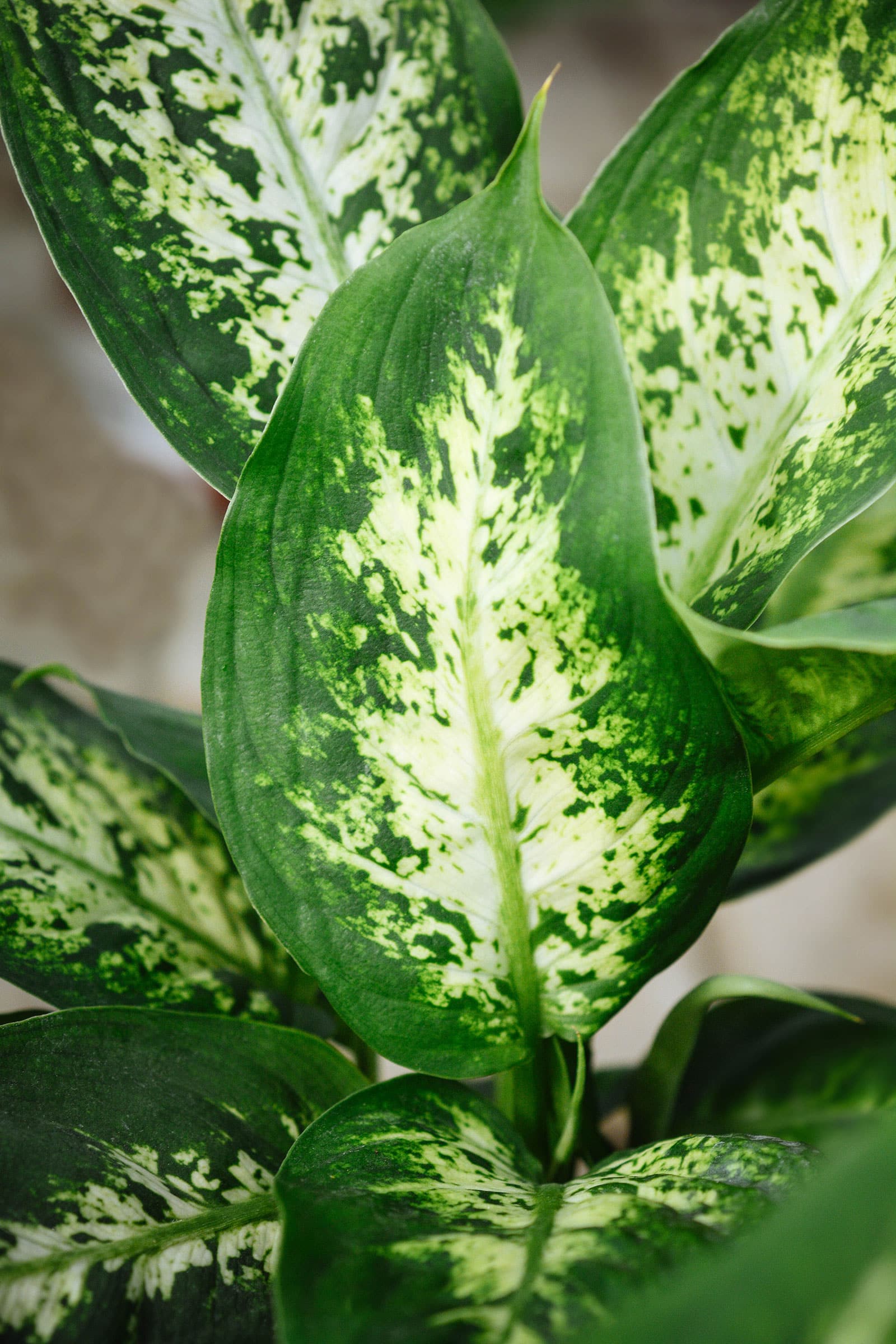
As the name suggests, Dieffenbachia ‘Compacta’ is a cultivar bred specifically for a more compact growth pattern. The relatively small leaves grow closer together than in ‘normal’ types of Dieffenbachias, and the plant also tends to produce more offshoots. All this makes for a small plant but a rather wild look!
‘Compacta’ is unpatented, but it has been around for a long time. The previously mentioned 1976 study lists its parent plant as Dieffenbachia seguine. Nurseries have used this variety in the production of a good bunch of other cultivars.
Dieffenbachia ‘Maroba’
Here’s another result of a mutation in the aforementioned Dieffenbachia ‘Tropic Snow’. It’s called Dieffenbachia ‘Maroba’, a pretty cultivar with large, round foliage and a typical pattern of light and dark green stripes and speckles. Very reminiscent of the original parent plant, Dieffenbachia amoena!
The patent for ‘Maroba’ was granted to a Dutch nursery in 1995 and lapsed in 2014.
Dieffenbachia ‘Camouflage’
‘Camouflage’ is the result of a spontaneous mutation in the aforementioned Dieffenbachia ‘Panther’. It was patented in 2000 in Florida (patent expired in 2020). The name says it all: this cultivar features a spectacular camouflage pattern!
Interestingly, Dieffenbachia ‘Camouflage’ really doesn’t look much like ‘Panther’ at all. Its somewhat lanceolate foliage is lime green, with thin dark green edges. There are dark speckles on the entire leaf surface, almost like someone splattered paint on them.
Dieffenbachia ‘Sterling’
As we’ve seen, some Dieffenbachia cultivars are the result of crossing two other cultivars, which can lead to rather confusing “family trees” and muddled origins.
Another example of this practice is Dieffenbachia ‘Sterling’, which according to its patent (granted in 2002, expired in 2022) is the love child of D. ‘Tropic Marianne’ and a relatively unknown cultivar called D. ‘Victory’.
Thanks to its deep green foliage, Dieffenbachia ‘Sterling’ actually resembles D. ‘Green Magic’ (discussed earlier) more than its own parent plants. The difference is in the leaf veins: in ‘Green Magic’, only the central vein is light in color. In ‘Sterling’, the side veins are also a silvery green.
Dieffenbachia ‘Crocodile’
Let’s close out the list with one of the most unusual Dieffenbachia cultivars, called Dieffenbachia ‘Crocodile’. This variety can be recognized by its lanceolate, dark green foliage with a central silvery pattern of speckles. What really makes it unique, however, are the undersides of the leaves.
Thanks to a mutation, the leaves on D. ‘Crocodile’ feature a strange texture along the central vein that really is almost reminiscent of crocodile skin. This isn’t exactly the most common Dieffenbachia, and it’s not cheap either, but it’s on my wishlist for sure!
Sources:
Chen, J., Henny, R. J., Norman, D. J., Devanand, P. S., & Chao, C. C. T. (2004). Analysis of genetic relatedness of Dieffenbachia cultivars using AFLP markers. Journal of the American Society for Horticultural Science, 129(1), 81-87.
Li, Q., Chen, J., Stamps, R. H., & Parsons, L. R. (2008). Variation in chilling sensitivity among eight Dieffenbachia cultivars. HortScience, 43(6), 1742-1745.


